Stocks rallied yesterday as bond yields stalled, the dollar weakened and spreads narrowed. The rally came after six straight days of losses and wasn’t very impressive. After climbing around 1.4%, the S&P 500 gave back a bunch of the gains starting around 2:30 PM ET to finish up only 87 bps.
What seems interesting on the surface is that the index has now tested the downtrend it broke on April 15 three times. Each time, that trend line has offered resistance and resulted in another leg lower. yesterday was no different. So, barring a gap higher today and a move beyond 5,040, the trend remains firmly lower at this stage.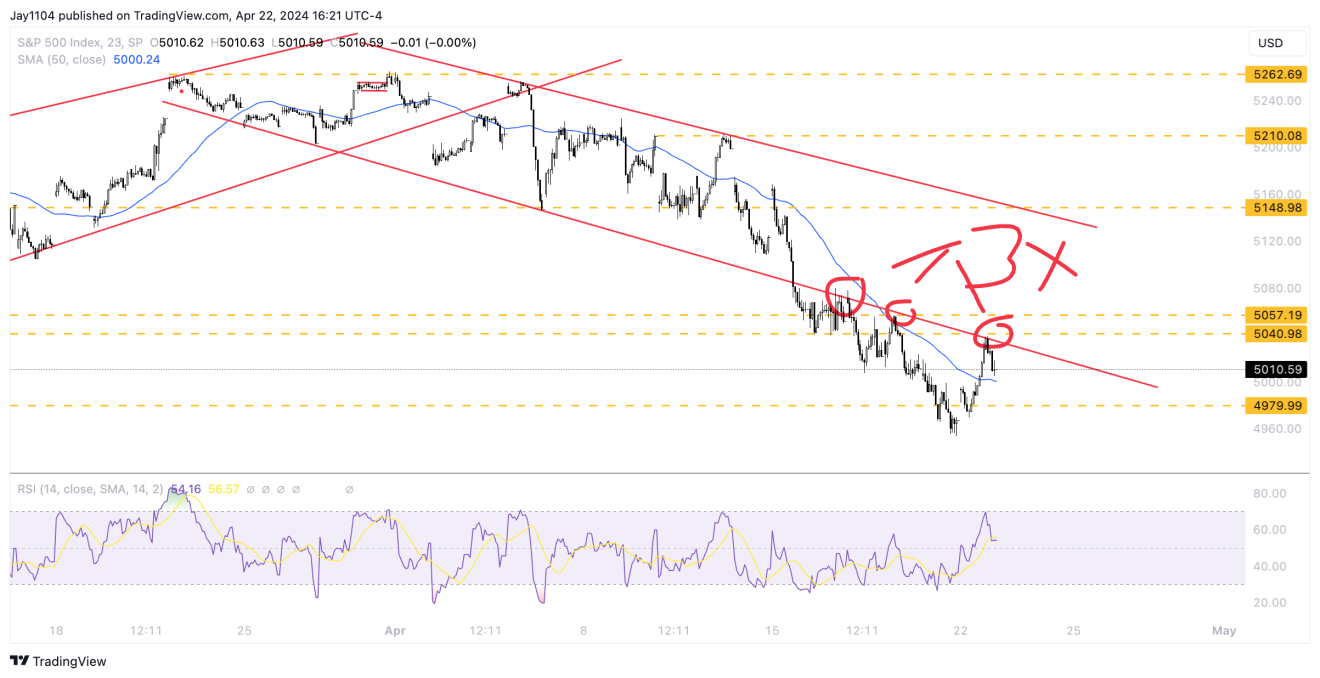
2-Yr Auction: What to Expect
Today, the Treasury will auction off the 2-year at 1 PM ET, which is expected to be $69 billion. That is higher than last month’s $66 billion. It will be interesting to see how this month’s auction goes ahead of the GDP report on Thursday and the PCE report on Friday.
Technically, one could argue that the 2-year rate should go higher, which is what I think at this point, with the next resistance level at 5.25%. A weaker auction could get rates moving even before the data comes at the end of the week.
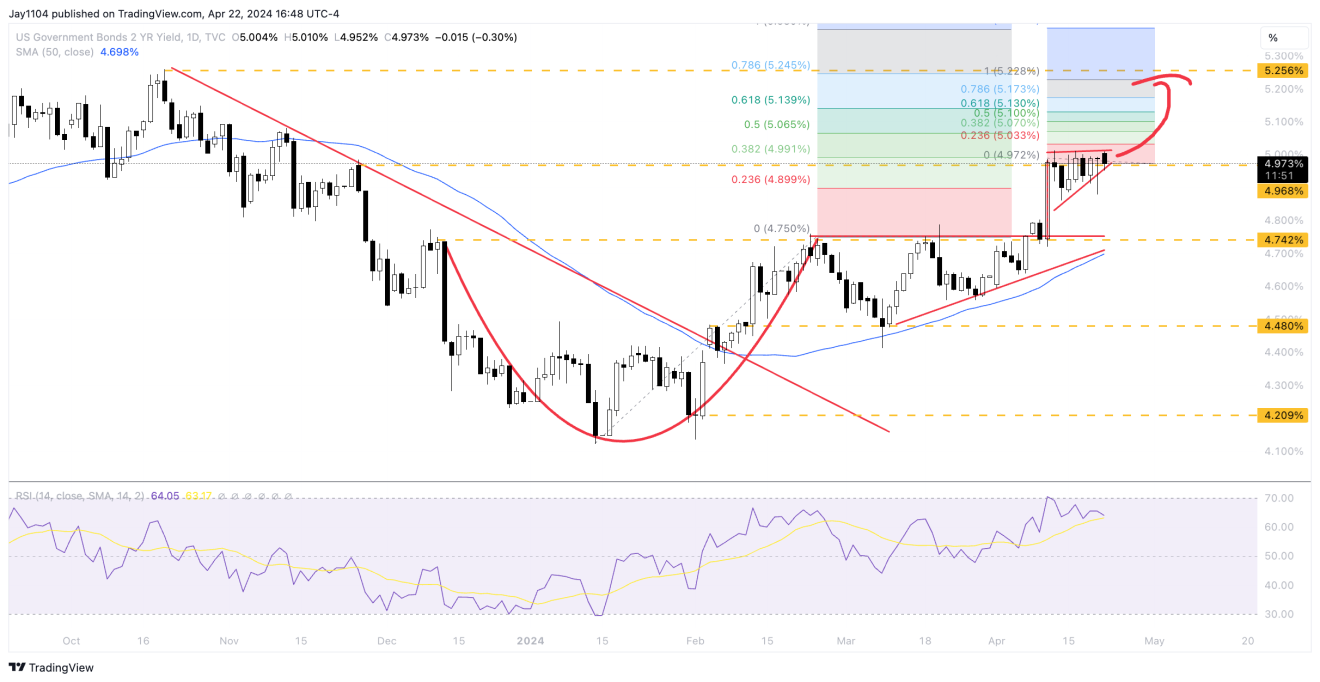
Canadian Dollar Gains Against US Dollar
One reason stocks were stronger yesterday was because the US dollar was weaker versus the Canadian dollar. The loonie has come to an important spot on the technical chart. This is the fourth time the loonie has tested the 1.386 area since October 2022.
Each time the touch came, it came at an essential point for the S&P 500, maybe by chance, maybe not by chance. However, the October 2022 top coincided with the equity market bottom, and March 2023 came around the same time as the equity market bottom; one could say the same about the October 2023 top.
Will this mark the next top in the loonie and the next bottom in the S&P 500? I don’t know, but I think if the loonie breaks out to the upside, it will tell us that the equity market has much, much further to fall.

That may merely come down to what the spread between the US 10-year and the Canada 10-Year does; more robust economic data in the US likely leads to wider spreads and, thus, a stronger dollar.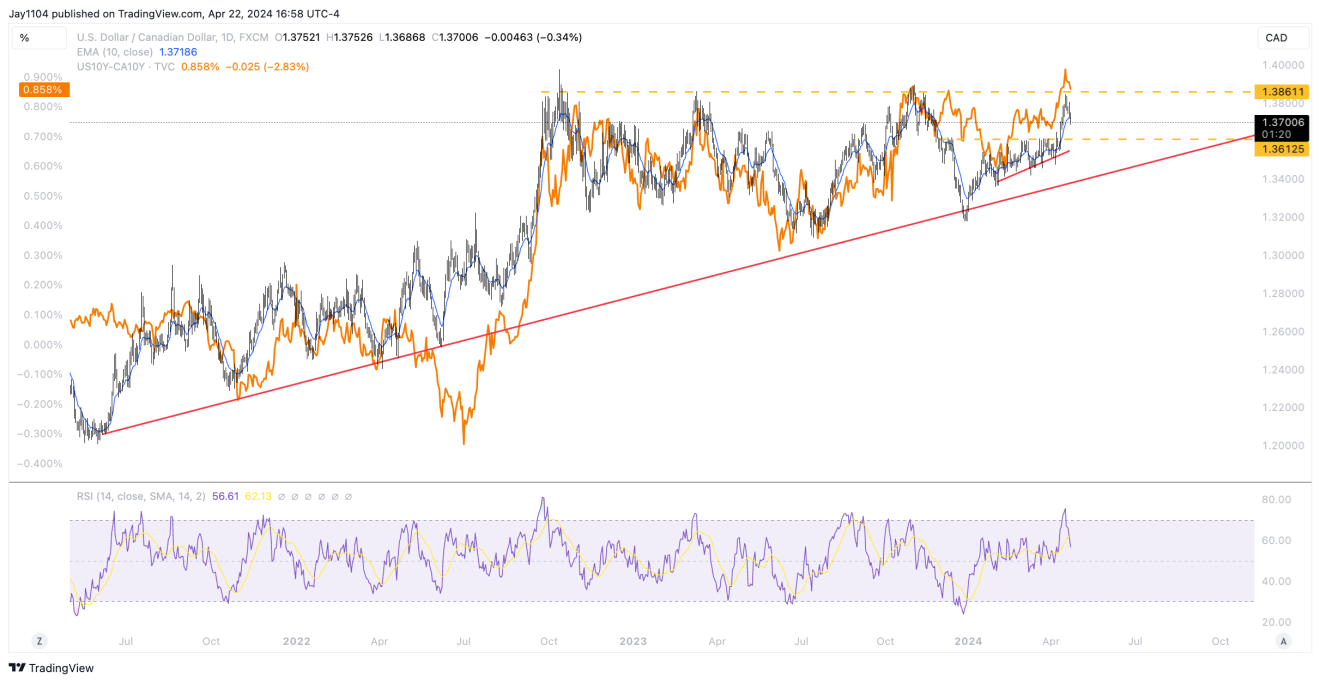
If the spread is a cup and handle pattern, as depicted below, the spread between the two yields could widen further, and wider spreads mean a stronger dollar.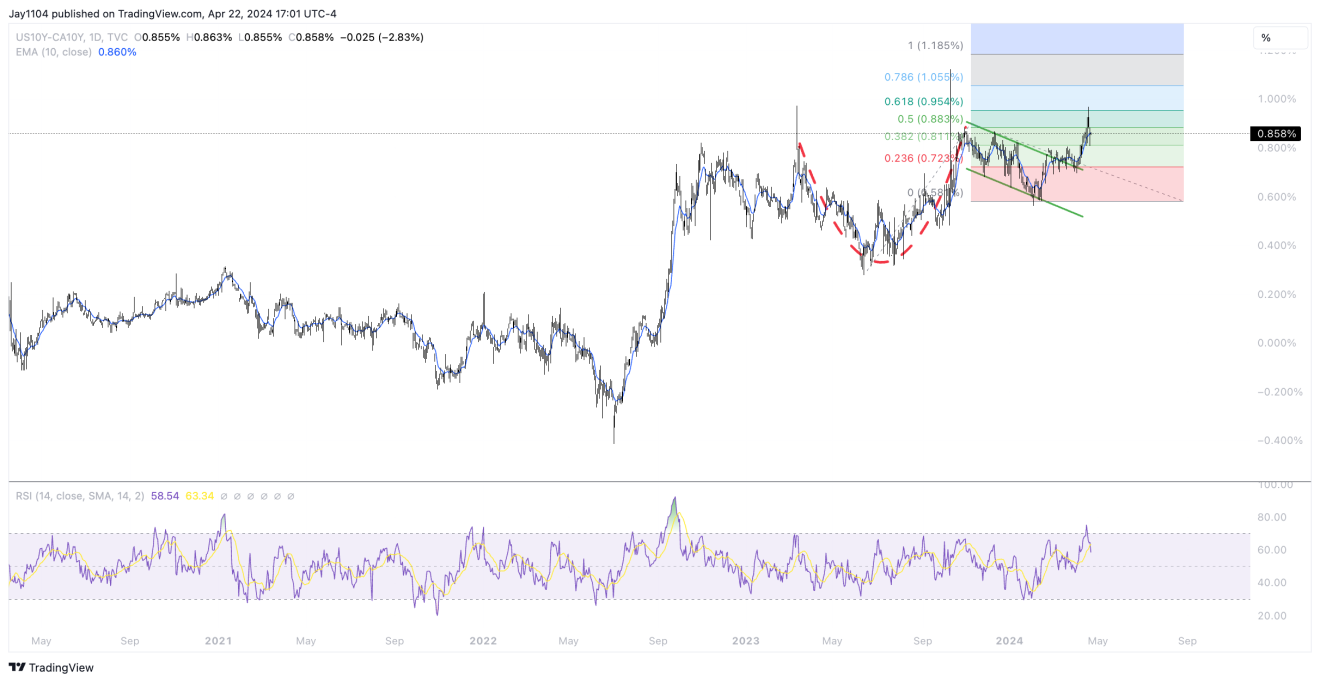
This is similar to what we are seeing between the United States 10-Year and the Germany 10-Year at the moment, with a bull flag that has broken out to the upside and could have much, much higher to go.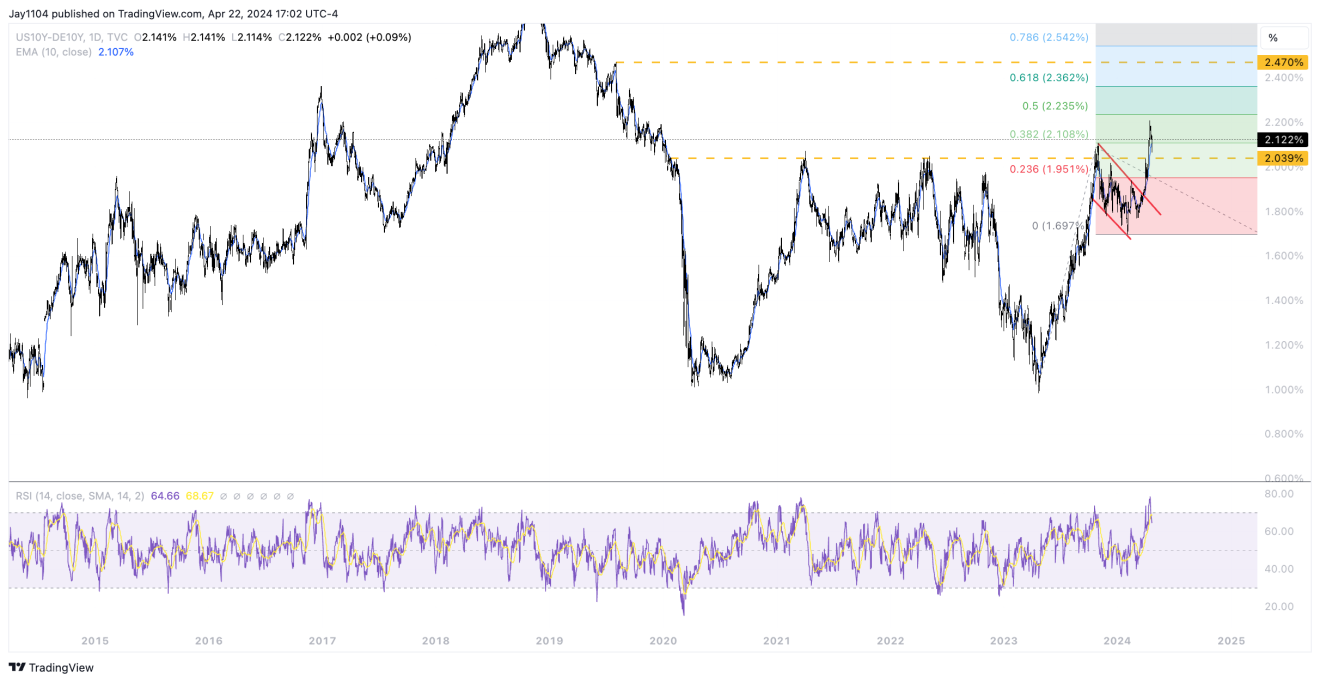
This takes us back to the beginning; if economic data, and more importantly, inflation data, continues to be hotter, then these spreads will continue to widen because rates in the US will continue to rise. The dollar will continue to strengthen, which means financial conditions will continue to tigthen, and as I have shown above, stocks will continue to trend lower.
